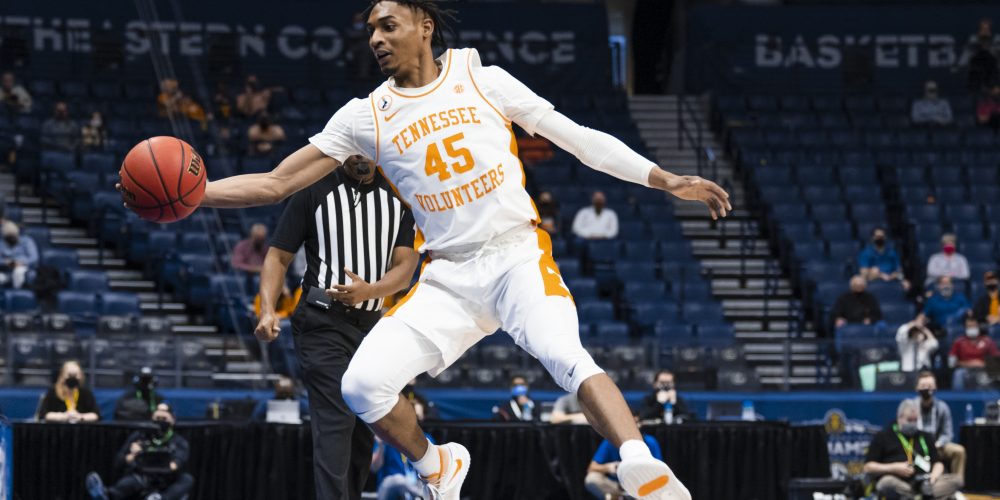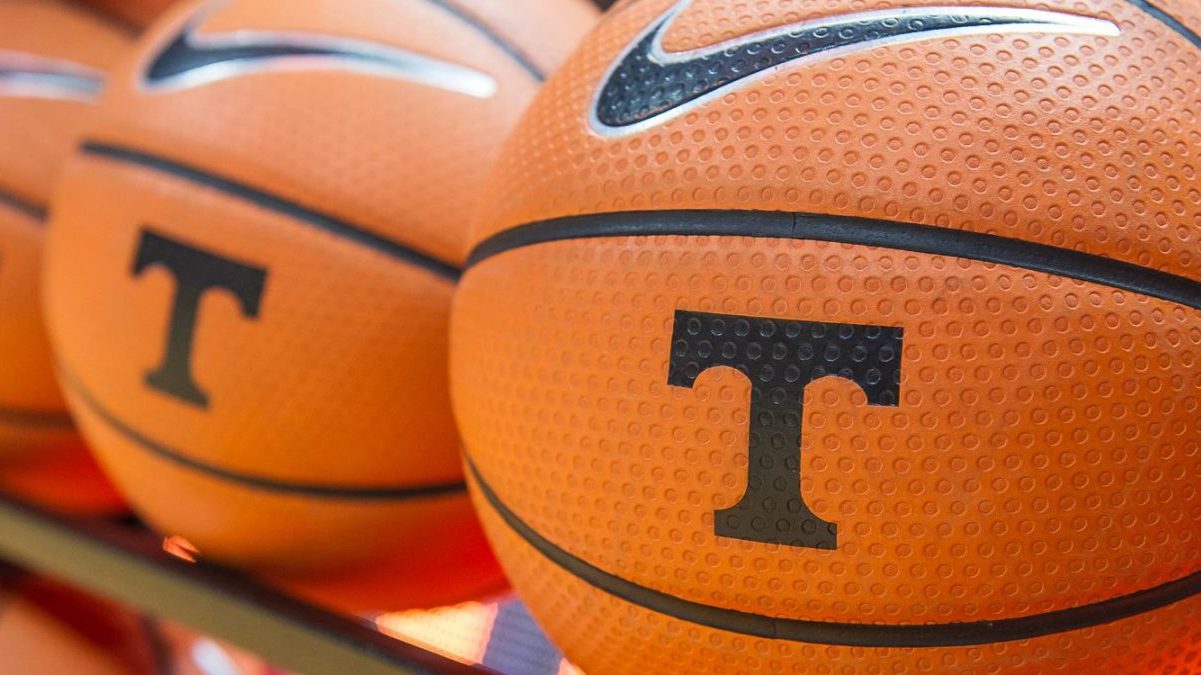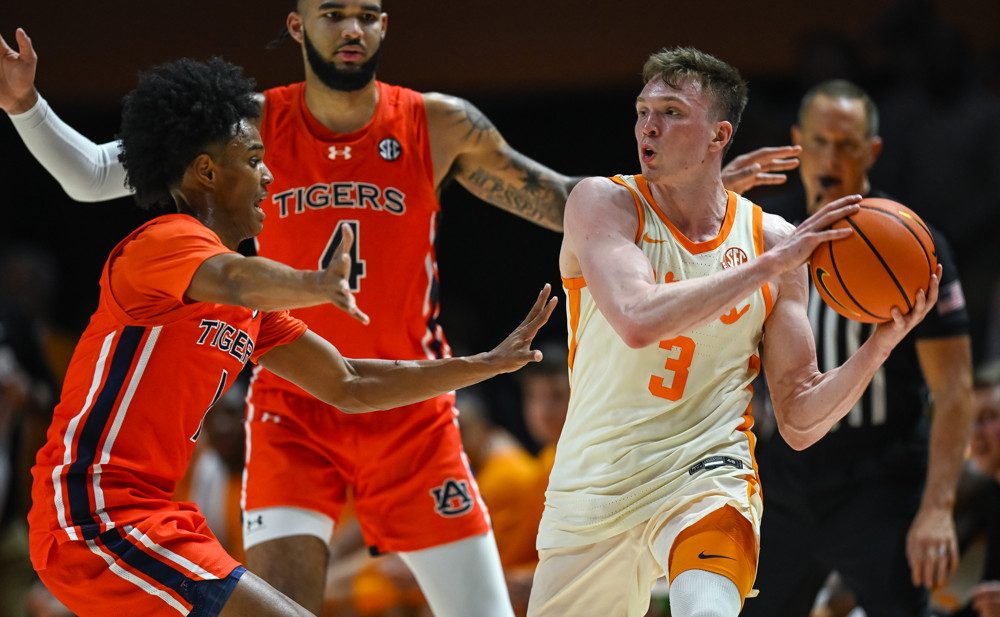From a recruiting rankings standpoint, Tennessee’s 2021 basketball team might be the most talented in program history. It’s the only Vol squad of the recruiting rankings era to feature three five-stars (Keon Johnson, Jaden Springer, and Josiah-Jordan James), and now two of them have departed for the NBA Draft as one-and-done players. And on the back end, the draft itself should validate that talent: Keon Johnson is routinely projected as a lottery pick, with Jaden Springer sprinkled throughout the first round. If that unfolds, it’ll be only the second time in school history the Vols had two players taken in the first round of the same draft, following Ernie & Bernie. And Bernard King (7th) is one of just three Vols to ever be drafted in the Top 10, along with Tom Boerwinkle (4th) and Dale Ellis (9th). There’s a lot of history to be made in a few months.
So when we take all that and try to figure out how this team lost as a five seed in the first round of the NCAA Tournament…you get the frustration. But when I started researching how far one-and-dones typically advance in the dance, it turns out the 2021 Vols are a more common tale than you might think.
The one-and-done rule has been in place for 15 seasons now, requiring high school seniors to play at least one year before becoming eligible for the draft. That first year in 2006 was a transitional time: Shawne Williams from Memphis was taken 17th overall, the only true freshman one-and-done of the draft. But the floodgates opened the following season: Greg Oden and Kevin Durant became the poster children for one-and-dones at the top of the NBA Draft, as eight of the first 21 players selected in the 2007 draft were college freshmen. And it’s gone about that way ever since.
Durant is sometimes used in protest against Rick Barnes: the 2007 Longhorns were 24-9 on Selection Sunday, earned a four seed, and were emphatically bounced in the second round by five-seed USC. “Couldn’t make the Final Four with Kevin Durant!”, etc.
Turns out, making the Final Four with one-and-dones is really hard to do, unless you’ve got a bunch of them.
In the last 15 tournaments played under the one-and-done rule, 60 teams made the Final Four. It’s important to note right away: 36 of those 60 Final Four teams had a player selected in the first round the same year (including projected first-round picks from Baylor and Gonzaga this year). That’s 60%. Talent is good!
But only 12 of those 60 Final Four teams had a one-and-done player selected in the first round. That’s only 20%. Only 10 of those 60 had a one-and-done player selected in the lottery, the top 14 picks. That’s 16.7%.
The idea that one-and-dones = tournament success built momentum early: Greg Oden’s 2007 Ohio State team, which we know plenty about, made the title game. Oden went on to be the first pick in the draft, with fellow one-and-dones Mike Conley (fourth) and Daequan Cook (21st) also going in the first round. The following year UCLA rode freshman Kevin Love (and sophomore Russell Westbrook) to the Final Four, while Derrick Rose was free throws away from winning a national title at Memphis. Oden’s NBA career didn’t work out, but the rest of this group – Conley, Love, Rose, plus Durant – has had tremendous NBA success.
Two years later, John Calipari walked through that door to Lexington and immediately brought the model to blue-blood Kentucky. John Wall and Demarcus Cousins fell in the Elite Eight, but went first and fifth in the draft. Brandon Knight went eighth as the Cats made the Final Four in 2011. And then in 2012, the breakthrough: Kentucky won the title with Anthony Davis and Michael Kidd-Gilchrist going 1-2 in the NBA Draft as one-and-dones, plus Marquis Teague at 29th (and sophomore Terrence Jones at 18th – again, talent helps!).
Kentucky’s success got Duke in the one-and-done business. The Cats were back in the Final Four in 2014 with James Young and Julius Randle in the lottery. And then in 2015, you had superteams of freshmen: Kentucky’s Karl-Anthony Towns went first, with Trey Lyles (12th) and Devin Booker (13th) also in the lottery, along with sophomore Willie Cauley-Stein (sixth). Thanks to Gonzaga’s defeat in this year’s title game, this is still the best team of the KenPom era, though they lost to Wisconsin in the Final Four. And the Badgers were then vanquished by a Duke squad with three one-and-done first rounders: Jahlil Okafor (third), Justise Winslow (10th), and Tyus Jones (24th).
After the 2015 season, it seemed there was no turning back. But instead, the opposite has happened.
In the last five Final Fours, only Zach Collins (Gonzaga 2017, 10th pick) and, we assume, Jalen Suggs have been one-and-done lottery picks. Tony Bradley, a reserve on North Carolina’s 2017 title team, was taken 28th overall. Malachi Richardson from Syracuse went 22nd in 2016. So in the last five Final Fours, only 10% of participants have featured a one-and-done lottery pick, and only 20% a one-and-done first round pick.
Tennessee needs to make the Final Four before it can worry about winning it all. But when you look at the title teams over the last 15 tournaments, only those 2012 Kentucky and 2015 Duke squads featured one-and-done lottery picks…and again, they both had two of them, plus a third freshman taken later in the first round. If you’re going to go that route, sure, you can win it all with freshmen…but only Duke and Kentucky have been able to recruit at that level, and they’ve only got one title to show for it that way each.
Again: talent is good. Twelve of the last 15 national champions had a player drafted in the first round that same year, and two of the three that didn’t were 2006 Florida and 2016 Villanova, who repeated and won two-in-three years, respectively. Talent is good. But the idea that one-and-done talent should automatically lead to NCAA Tournament success is far more flawed than it was six years ago.
One-and-dones still transition straight to the lottery: in the 2018 and 2019 NBA Drafts, 17 of the 28 lottery picks were freshmen. But when you look at what those 17 freshmen did in the NCAA Tournament:
| Year | Player | School | Pick | Result |
| 2019 | Zion Williamson | Duke | 1 | Elite Eight |
| 2019 | RJ Barrett | Duke | 3 | Elite Eight |
| 2019 | Darius Garland | Vanderbilt | 5 | n/a |
| 2019 | Coby White | North Carolina | 7 | Sweet 16 |
| 2019 | Jaxson Hayes | Texas | 8 | n/a |
| 2019 | Cam Reddish | Duke | 10 | Elite Eight |
| 2019 | Tyler Herro | Kentucky | 13 | Elite Eight |
| 2019 | Romeo Landford | Indiana | 14 | n/a |
| 2018 | Deandre Ayton | Arizona | 1 | First Round |
| 2018 | Marvin Bagley III | Duke | 2 | Elite Eight |
| 2018 | Jaren Jackson Jr. | Michigan State | 4 | Second Round |
| 2018 | Trae Young | Oklahoma | 5 | First Round |
| 2018 | Mo Bamba | Texas | 6 | First Round |
| 2018 | Wendell Carter Jr. | Duke | 7 | Elite Eight |
| 2018 | Collin Sexton | Alabama | 8 | Second Round |
| 2018 | Kevin Knox | Kentucky | 9 | Sweet 16 |
| 2018 | Shai Gilgeous-Alexander | Kentucky | 11 | Sweet 16 |
If you played for Duke and Kentucky, alongside multiple one-and-dones, you made an Elite Eight. If not, you didn’t. Almost half of these guys didn’t get out of the first weekend.
So yes, Tennessee should continue to recruit talented players. But, as Rick Barnes already knows, the idea that you can find breakthrough success on the shoulders of one-and-dones is a struggling one these days. The Vols still need first-round talent, no doubt. But they appear more likely to have tournament success when that talent is developed over multiple years, not recruited and soon-to-be gone.




Right…the trick is how do you find the right mix of elite 1-and-done talent plus established workhorses who have been through it?
That 2012 Kentucky team basically only played 7 guys…the 4 you named, Kyle Wiltjer (also a freshman), and then they also got massive contributions from Doron Lamb (SO) and Darius Miller (SR). The 2015 Duke squad basically never took Quinn Cook (SR) off the floor, plus got contributions from Matt Jones (SO) and Amile Jefferson (JR).
Talent is good, elite talent is better, and being able to add it to a solid core is the dream.
6th year senior forwards might help.
Welcome back, Fulky!